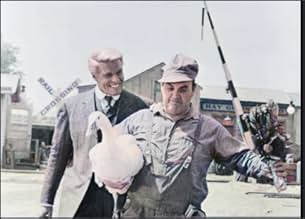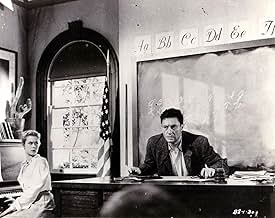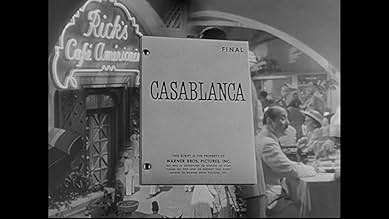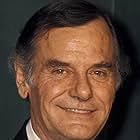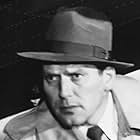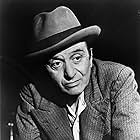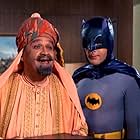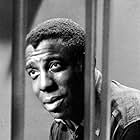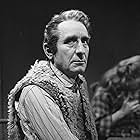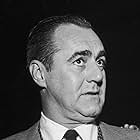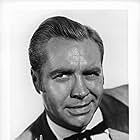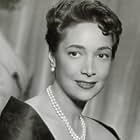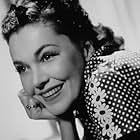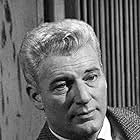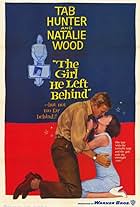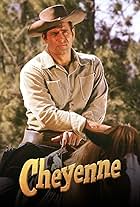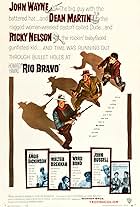This show featured three rotating series, "Kings Row", "Cheyenne" and "Casablanca". The last 15 minutes was devoted to promoting Warner Brothers movies but this was dropped along with "Kings... Read allThis show featured three rotating series, "Kings Row", "Cheyenne" and "Casablanca". The last 15 minutes was devoted to promoting Warner Brothers movies but this was dropped along with "Kings Row" and "Casablanca". "Cheyenne" went on to run on TV for eight years.This show featured three rotating series, "Kings Row", "Cheyenne" and "Casablanca". The last 15 minutes was devoted to promoting Warner Brothers movies but this was dropped along with "Kings Row" and "Casablanca". "Cheyenne" went on to run on TV for eight years.
Browse episodes
Storyline
Did you know
- ConnectionsFeatured in Jack L. Warner: The Last Mogul (2023)
Featured review
"Warner Bros. Presents" was the first program ever produced for television by the Warner Bros. Studio. It premiered at 7:30 p.m. on Tuesday, September 13, 1955 on the ABC Television Network.
"Warner Bros. Presents" was an umbrella name for three rotating series loosely based on the films "Kings Row," "Casablanca," and "Cheyenne" made by Warner Bros. years earlier. The show was hosted by an affable Gig Young. The final eight to fifteen minutes of each show contained a segment titled "Behind the Cameras at Warner Bros.," which provided behind-the-scenes footage at the Warner Bros. Studio, and promoted the studio's recent and upcoming theatrical releases.
Despite an initial antagonism to the new medium of television, Warner Bros. decided to diversify into television production, after Walt Disney's unprecedented success with his anthology TV series "Disneyland," which premiered a year before.
"Warner Bros. Presents" was not a hit as it was initially conceived. The critics were not impressed and neither was the audience. However, "Warner Bros. Presents" represents a significant breakthrough in television history because like "Disneyland", it marked for the first time the association of a major Hollywood studio and a television network--a relationship that still continues today. After the unparalleled triumph of "Disneyland," Warner Bros. envisioned television as a means to promote the studio and its films. And like Walt Disney--who virtually forced himself to produce for television to obtain the remaining financing for his Disneyland theme park in Anaheim, CAthe Warner Bros. Studio was less interested in producing for television than in using the emerging medium to increase awareness of upcoming Warner Bros. theatrical releases.
Other Hollywood studios promptly jumped on the television bandwagon during the 1955-56 season, with such shows as the "Twentieth Century-Fox Hour" on CBS and the "MGM Parade" on ABC. As expressed by Christopher Anderson in his internet article about "Warner Bros. Presents" and in his excellent book, Hollywood TV: The Studio System in the Fifties, "the opening credits for 'Warner Bros. Presents' pointedly reminded viewers of the studio's movie-making legacy. As the screen filled with the trademark Warner Bros. logo superimposed over a soaring aerial shot of the studio, an announcer exclaimed, 'From the entertainment capital of the world comes Warner Bros. Presents. The hour that presents Hollywood to you. Made expressly for television by one of the great motion picture studios.'" Of the three rotating series in "Warner Bros. Presents," the only show to make a lasting impression with the public was "Cheyenne," a Western starring Clint Walker. However, the television episodes of "Casablanca" and "Kings Row" were pale reminders of the greatness of the movies they were based on.
The "Behind the Cameras" segments offered the television audience a fascinating view of film production at a major Hollywood studio in the 1950s. These segments showed viewers how sound, editing, and other studio departments contributed to the filming of a motion picture, just like Walt Disney was doing weekly in his "Disneyland" anthology series. The segments included exclusive interviews with movie stars such as John Wayne, Gary Cooper, and Elizabeth Taylor, as well as behind the cameras personnel in action.
While these segments undoubtedly have a nostalgic and historical value to movie enthusiasts today, the 50s audiences and advertisers were not impressed with "Behind the Cameras" (despite the success of similar segments in "Disneyland,"), and disliked the obvious self-promotion involved. They also rejected the poor scripts of some of the episodes in the anthology. Eventually, the "Behind the Cameras" segment was dropped. From the three rotating series, only "Cheyenne" survived and after the cancellation of "Kings Row," "Warner Bros. Presents" alternated the series "Conflict" with "Cheyenne," while "Casablanca" was gradually phased out. Despite these difficulties, Warner Bros. would go on to become a leader in television production, and "Cheyenne" would continue for eight successful years.
The success of "Cheyenne," prompted the creation of other Warner Bros. productions for television during the late 50s and early 60s, such as "Bronco," "Maverick," "77 Sunset Strip," "Hawaiian Eye," "Bourbon Street Beat," and "Surfside Six." The premiere "Casablanca" episode from "Warner Bros. Presents" can be seen in the Bonus Materials of the "Casablanca" Two-Disc Special Edition DVD under the name "Who Holds Tomorrow?" While this "Casablanca" television episode is disappointing compared to the film classic, this installment of "Warner Bros. Presents" is worth watching for the exciting opening, showing the aerial view of the Warner Bros. Studio and sprawling back lot heralded by a dramatic fanfare based on Max Steiner's music, for a beautiful Anita Ekberg in a supporting role before "La Dolce Vita" (1960), and for the show's place in television history.
We wish to give credit for some of the information above to Anderson, Christopher, "Hollywood TV: The Studio System in the Fifties." Austin: University of Texas Press, first edition, 1994.
"Warner Bros. Presents" was an umbrella name for three rotating series loosely based on the films "Kings Row," "Casablanca," and "Cheyenne" made by Warner Bros. years earlier. The show was hosted by an affable Gig Young. The final eight to fifteen minutes of each show contained a segment titled "Behind the Cameras at Warner Bros.," which provided behind-the-scenes footage at the Warner Bros. Studio, and promoted the studio's recent and upcoming theatrical releases.
Despite an initial antagonism to the new medium of television, Warner Bros. decided to diversify into television production, after Walt Disney's unprecedented success with his anthology TV series "Disneyland," which premiered a year before.
"Warner Bros. Presents" was not a hit as it was initially conceived. The critics were not impressed and neither was the audience. However, "Warner Bros. Presents" represents a significant breakthrough in television history because like "Disneyland", it marked for the first time the association of a major Hollywood studio and a television network--a relationship that still continues today. After the unparalleled triumph of "Disneyland," Warner Bros. envisioned television as a means to promote the studio and its films. And like Walt Disney--who virtually forced himself to produce for television to obtain the remaining financing for his Disneyland theme park in Anaheim, CAthe Warner Bros. Studio was less interested in producing for television than in using the emerging medium to increase awareness of upcoming Warner Bros. theatrical releases.
Other Hollywood studios promptly jumped on the television bandwagon during the 1955-56 season, with such shows as the "Twentieth Century-Fox Hour" on CBS and the "MGM Parade" on ABC. As expressed by Christopher Anderson in his internet article about "Warner Bros. Presents" and in his excellent book, Hollywood TV: The Studio System in the Fifties, "the opening credits for 'Warner Bros. Presents' pointedly reminded viewers of the studio's movie-making legacy. As the screen filled with the trademark Warner Bros. logo superimposed over a soaring aerial shot of the studio, an announcer exclaimed, 'From the entertainment capital of the world comes Warner Bros. Presents. The hour that presents Hollywood to you. Made expressly for television by one of the great motion picture studios.'" Of the three rotating series in "Warner Bros. Presents," the only show to make a lasting impression with the public was "Cheyenne," a Western starring Clint Walker. However, the television episodes of "Casablanca" and "Kings Row" were pale reminders of the greatness of the movies they were based on.
The "Behind the Cameras" segments offered the television audience a fascinating view of film production at a major Hollywood studio in the 1950s. These segments showed viewers how sound, editing, and other studio departments contributed to the filming of a motion picture, just like Walt Disney was doing weekly in his "Disneyland" anthology series. The segments included exclusive interviews with movie stars such as John Wayne, Gary Cooper, and Elizabeth Taylor, as well as behind the cameras personnel in action.
While these segments undoubtedly have a nostalgic and historical value to movie enthusiasts today, the 50s audiences and advertisers were not impressed with "Behind the Cameras" (despite the success of similar segments in "Disneyland,"), and disliked the obvious self-promotion involved. They also rejected the poor scripts of some of the episodes in the anthology. Eventually, the "Behind the Cameras" segment was dropped. From the three rotating series, only "Cheyenne" survived and after the cancellation of "Kings Row," "Warner Bros. Presents" alternated the series "Conflict" with "Cheyenne," while "Casablanca" was gradually phased out. Despite these difficulties, Warner Bros. would go on to become a leader in television production, and "Cheyenne" would continue for eight successful years.
The success of "Cheyenne," prompted the creation of other Warner Bros. productions for television during the late 50s and early 60s, such as "Bronco," "Maverick," "77 Sunset Strip," "Hawaiian Eye," "Bourbon Street Beat," and "Surfside Six." The premiere "Casablanca" episode from "Warner Bros. Presents" can be seen in the Bonus Materials of the "Casablanca" Two-Disc Special Edition DVD under the name "Who Holds Tomorrow?" While this "Casablanca" television episode is disappointing compared to the film classic, this installment of "Warner Bros. Presents" is worth watching for the exciting opening, showing the aerial view of the Warner Bros. Studio and sprawling back lot heralded by a dramatic fanfare based on Max Steiner's music, for a beautiful Anita Ekberg in a supporting role before "La Dolce Vita" (1960), and for the show's place in television history.
We wish to give credit for some of the information above to Anderson, Christopher, "Hollywood TV: The Studio System in the Fifties." Austin: University of Texas Press, first edition, 1994.
Details
- Release date
- Country of origin
- Language
- Also known as
- Warner Brothers presenta
- Filming locations
- Production company
- See more company credits at IMDbPro
- Runtime1 hour
- Color
- Aspect ratio
- 1.33 : 1
Contribute to this page
Suggest an edit or add missing content


